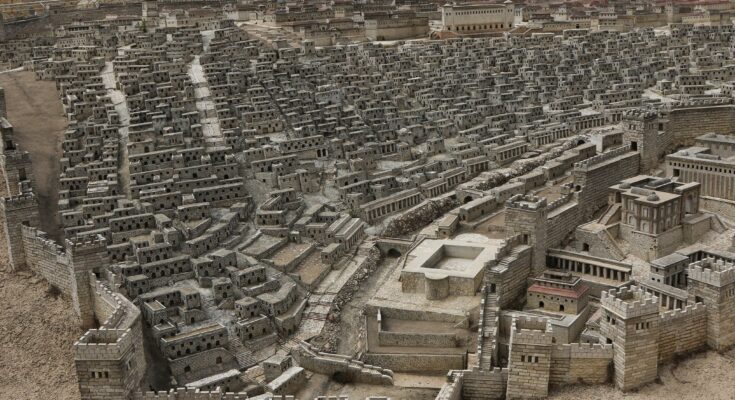Archaeologists have discovered a 2,300-year-old ancient Greek gold ring set with a precious stone in the City of David, Jerusalem, which was reportedly made for and worn by a young child who resided there during the Hellenistic period.
The excavations were carried out jointly between the Israel Antiquities Authority (IAA) and Tel Aviv University (TAU) as part of the Jerusalem Walls National Park project, with the support of the Elad Foundation.
A 2300-year-old gold ring was recently unearthed in the City of David, shedding light on a child's life in ancient Jerusalem. The delicately crafted ring, with a red precious stone, offers a glimpse into Hellenistic artistry. #Archaeology #HellenisticPeriod pic.twitter.com/bb7dNfvVjA
— Philippe Bohstrom (@PhilippeBostrom) May 27, 2024
“It is an unusual and deeply moving find; not one that we discover every day,” the archaeological team told the Jerusalem Post. The red precious stone was apparently a garnet, and the gold is a refined material that was very well-preserved. Since its last use over two millennia ago, the ring hasn’t accumulated rust or weathering.
The gold ring was recently uncovered by Tehiya Gangate, a City of David archaeologist and member of the excavation team. She was sifting earth through a screen when something glittery caught her eye.
“I immediately yelled, ‘I found a ring, I found a ring!’ Within seconds, everyone gathered around me, and there was great excitement. This is an emotionally moving find. I always wanted to find gold jewelry, and I am very happy this dream came true – literally a week before I went on maternity leave,” she told the Jerusalem Post.
“The ring is very small. It might fit a woman’s pinkie or a young girl’s or boy’s finger,” IAA excavation directors Dr Yiftah Shalev and Riki Zalut Har-tov said.
Dr Marion Zindel added that the ring was made by hammering thin pre-cut gold leaves on a metal ring base. Aesthetically, it is characteristic of the common fashion of the Persian and early Hellenistic periods, dating from the late fourth to early third century BC and onwards. During that era, people started to have a preference for gold with set stones rather than decorated gold.
What Jerusalem’s Gold Ring means for the History of the City
TAU professor Yuval Gadot and archaeologist Efrat Bocher explained that the recently discovered gold ring joins other ornaments of the early Hellenistic period found in the City of David excavations, including a horned animal earring and a decorated gold bead.
Gold jewelry was common in the Hellenistic era, from Alexander the Great’s reign onward. His conquests served to spread and transport luxury goods and products. Jewelry decorations at this time were often inspired by mythological figures or significant symbolic events.
The Givati car park excavation finds are starting to provide a new picture of the nature and stature of Jerusalem’s inhabitants in the early Hellenistic period. The area has previously yielded very few structures and artifacts from this era, so the majority of historians believed Jerusalem was then a small town limited to the top of the southeastern slope (City of David), and with relatively few resources. But the new findings suggest a different story.



